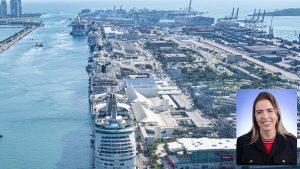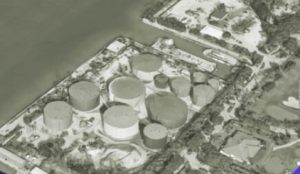|
Getting your Trinity Audio player ready...
|
 PortMiami is more than a backdrop for skyline photos or a headline in the evening news. It is a 520-acre engine that drives Miami-Dade’s economy, fuels our supply chain, and connects us to the world. Every year, PortMiami supports more than 334,000 jobs statewide and generates over 24 billion dollars in economic impact. It is one of the largest economic drivers in Florida, and it deserves planning that matches its importance.
PortMiami is more than a backdrop for skyline photos or a headline in the evening news. It is a 520-acre engine that drives Miami-Dade’s economy, fuels our supply chain, and connects us to the world. Every year, PortMiami supports more than 334,000 jobs statewide and generates over 24 billion dollars in economic impact. It is one of the largest economic drivers in Florida, and it deserves planning that matches its importance.
In recent weeks, the Board of County Commissioners has been grappling with the fuel crisis created when Miami-Dade failed to secure ownership of the Fisher Island fuel farm. That problem is real, but it also gives us a chance to do better. We can use this moment to modernize the port and bring it fully into the 21st century.
We all agree that energy independence is essential. Miami- Dade needs a long-term, predictable, and environmentally responsible fuel supply. Fisher Island does not meet those standards. The smart path forward is a secure, modern facility on PortMiami that reduces vulnerabilities, keeps critical operations running during storms, and strengthens regional resilience.
PortMiami (aka Dodge Island) was carved from the bay for industry, not for retail or residences. Zoned for port operations; height, density, and land use already support heavy infrastructure such as cranes, cruise terminals, utilities, and logistics hubs which is exactly where our energy infrastructure should be located.

The 2011 PortMiami Master Plan once set a balanced vision for cargo, cruise, and commercial growth, but fifteen years later the world has changed. Global trade routes have shifted; climate resilience has become a daily concern and security expectations have evolved. The Master Plan needs to be revised.
During the pandemic, the cruise industry used downtime to modernize and build while the rest of the port, including cargo yards, surface parking lots, cranes, and public safety facilities, stayed stuck in the past. That imbalance threatens both our competitiveness and our collective security.
Fire Station 39 at PortMiami is a clear example. It is more than thirty years old, too small, and poorly located. The firefighters who protect billions in cargo and thousands of workers are operating out of a temporary trailer. That is unacceptable for a facility of this size and importance.
Modernization must also mean environmental protection. The PortMiami sits within Biscayne Bay, one of our most fragile ecosystems. Every decision we make has a ripple effect on water quality, seagrass, and marine life. Investing in resilient infrastructure and cleaner energy at the port is not just good policy, it is essential stewardship. That is why shore power, technology that allows cruise ships to plug into the electrical grid instead of burning fuel while docked at PortMiami was an outside the 2011 Master Plan investment made unanimously by the County Commission.

The decisions before the County Commission in the months ahead are about more than fuel. They are about priorities. We must invest in security infrastructure, fire-rescue capacity, environmental resilience, and sustainable energy. That means redesigning outdated layouts, replacing surface parking with structured facilities, and using incentives to move more cargo off the island to inland distribution centers. These steps will open space for critical uses and strengthen the entire regional supply chain.
PortMiami is the county’s front door to global commerce. If we expect it to keep carrying our economy forward, we must treat it like the strategic asset it is. The next chapter of PortMiami’s growth should not be about buying an old fuel farm, it should be about building modern infrastructure, creating green jobs, and protecting Biscayne Bay.
The choice is not between progress and preservation. It is between planning for the next decade or staying stuck in the last one.





